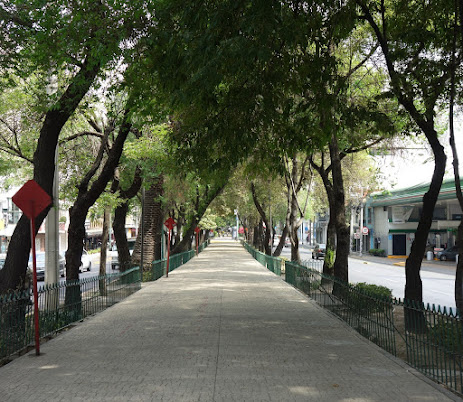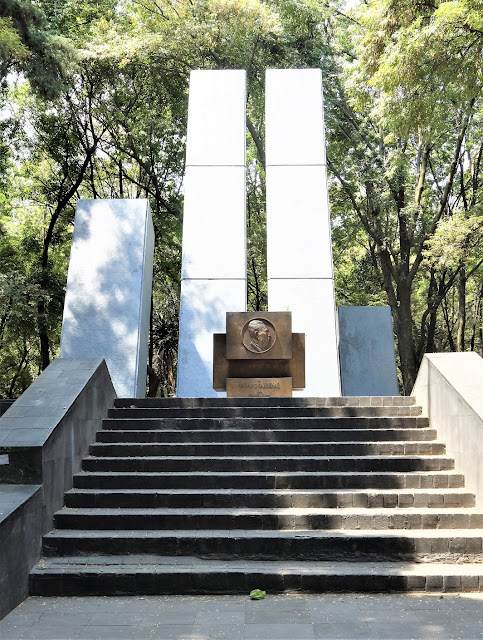Mexico City is chock full of "taquerías"... taco joints. When I first started renting the apartment where I now stay, there was a "taquería" just a block away that I would frequent. It was part of a chain called "Taquearte". Then they moved to a larger, glitzier spot, also very close, across the street from the World Trade Center. It was a fancier place, but it seemed that the quality of the food went downhill.
I then started going to another "taquería" that is two blocks away. It's called "El Huequito", and it is also part of a chain. The original location was started in 1959 in the Historic Center of the city, and it was barely a square meter in size. It came to be known as "huequito" which means a "little hole"... in other words, a hole in the wall. That original place downtown is still in operation, but in the years since then the business has expanded to include six other locations. Although it is not as big and fancy as the new "Taquearte" in my neighborhood, my nearby "El Huequito" certainly wouldn't be called a "hole in the wall". It is bright and clean, and much, much larger than a square meter. It has seating inside and out. Unless it is a chilly evening I usually eat outside, and with the current pandemic, outdoor seating is my preference.
Last week, one late afternoon. I went to "El Huequito" for my dinner.
I started out with Aztec soup. Aztec soup and tortilla soup are quite similar, and the one is often confused with the other. In fact I needed to research the difference myself. While tortilla soup has a tomato-based broth, Aztec soup has a bean-based broth. Anyways, "El Huequito" has a very tasty Aztec soup.
Although the menu has a variety of tacos, "El Huequito" is known for what they call gourmet "tacos al pastor". "Tacos al pastor", made with marinated pork and onions, are perhaps Mexico City's best known variety of taco. I usually order three "tacos al pastor" when I am at "El Huequito". This time, however, I decided to order the "Pastor Especial" with cheese, which the menu describes as a "temple to the 'taco al pastor'".
There was a tower of "pastor" meat with melted cheese draped over it along with tortillas for making your own tacos. The metal container on the table has lime wedges and a variety of salsas from mild to incendiary for finishing off your taco.




































































